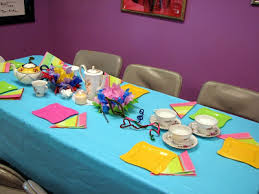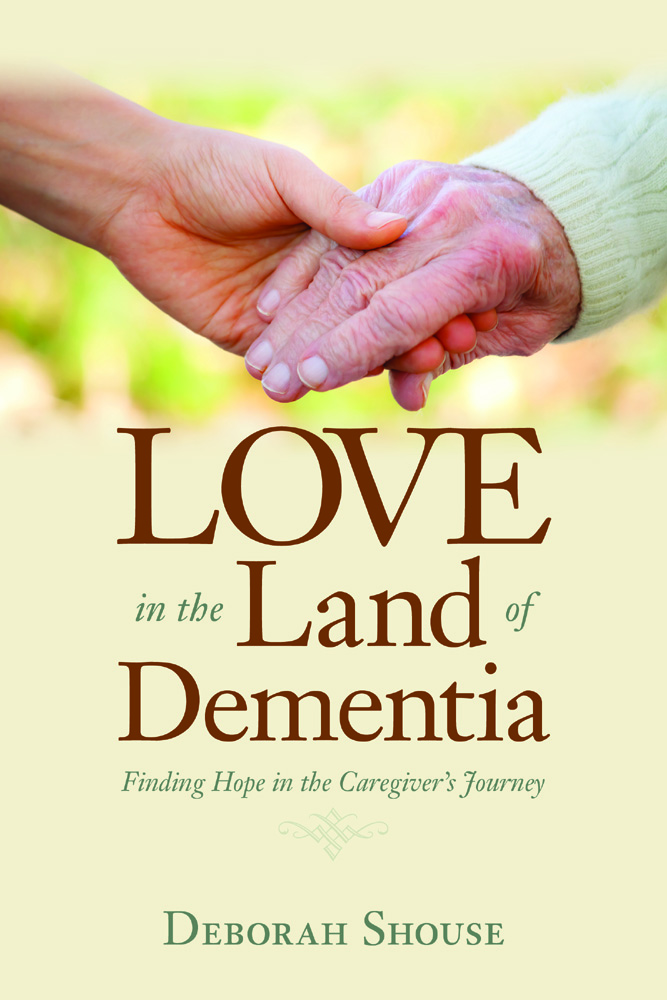Posts Tagged ‘the arts’
Musing Together: Looking at Art Expands Skills, Increases Socialization, and Widens Horizons
 The group pauses in front of a large contemporary sculpture, depicting a preacher standing before his congregation at a small country church. They walk around the piece, noticing the pews, the organist, and the variety of parishioners, and chatting as they view. Then they settle into chairs and co-facilitator Esther Smith asks: “What is one word that comes to mind when you look at this piece of art.”
The group pauses in front of a large contemporary sculpture, depicting a preacher standing before his congregation at a small country church. They walk around the piece, noticing the pews, the organist, and the variety of parishioners, and chatting as they view. Then they settle into chairs and co-facilitator Esther Smith asks: “What is one word that comes to mind when you look at this piece of art.”
“Boring,’ says one woman.
“What makes it boring?” Esther asks.
“It brings me back to my childhood, when I was stuck in church for hours,” she answers. “I was so bored.”
A few others nod. Someone asks, “When was this made? Where is it from?” and the conversation about the art continues.
Every month at the High Museum in Atlanta, Georgia, Teaching Artist Esther Smith guides a group of care partners and people living with dementia on a 90-minute gallery exploration called Musings Together.
“It’s a light-hearted, interactive experience,” Esther says. “We go at a slow pace, seeing only three to four works each time. We want people to have a comfortable, personalized experience with art.”
 The open-ended conversation brings out people’s stories and ideas. Sitting in front of Giovanni Bellini’s Madona and Child, Esther asks, “What lines do you notice in this painting? Trace them in the air with your hand.”
The open-ended conversation brings out people’s stories and ideas. Sitting in front of Giovanni Bellini’s Madona and Child, Esther asks, “What lines do you notice in this painting? Trace them in the air with your hand.”
After people trace their lines, she asks, “What line was most interesting to you?” That question might lead into a discussion of what makes this painting different. Then Esther might invite the group to pose like the picture. She might say, “How would that baby’s head feel in your hand?”
“These simple prompts launch us into deep conversations,” Esther says. She and her team are experimenting with expanding the sensory experience, including bringing out oranges when they’re gazing at a still life of fruit and letting each guest hold and examine the orange. Esther also invites people to occasionally sketch an aspect of a drawing that appeals to them, using a drawing pad on a clipboard.
“ A number of our participants have never been regular museum-goers. Now they feel comfortable here and come more often,” Esther says. “Developing a new community of friends and an expanding interest in art enriches their lives.” #
Want to look at art with someone who is living with dementia?
If you’re visiting a museum, focus on a gallery with 3-4 large and interesting pieces. Ask a docent for advice, if needed. If you’re at home, give yourself plenty to time to comfortably view a few works of art on-line or in books.
- Bring a folding chair, so you can sit.
- Chose a time of day when your partner is energetic and the gallery is relatively quiet.
- Have fun just noticing the aspects of the piece. You might invite comments on colors, textures, familiar figures, objects that seem odd to you, and other aspects.
- Ask open-ended questions, such as, “What does this piece make you think of?” “What do you like about this piece?” “How do you think that main guy feels?”
When attention wanes, move onto something else, including a lovely coffee or tea break.
Click to view informative and inspiring short videos on our YouTube channel
Deborah Shouse is the author of Connecting in the Land of Dementia: Creative Activities to Explore Together and Love in the Land of Dementia: Finding Hope in the Caregiver’s Journey.
A Toolkit for Art Activities
“We’re going to talk about birds today and the beautiful sounds and colors they bring to our lives,” Dalia Gottlieb-Tanaka, PhD tells her client Sylvia, who was an art teacher before she was diagnosed with dementia. Dalia, the founder of the Society for the Arts in Dementia Care in British Columbia, hopes to reconnect Sylvia with her love of birds and invite out her creative abilities through discussion and painting.
“When people living with dementia have purposeful activity while interacting with others, they’re less depressed,” Dalia says. “They find more satisfaction in life. Those who’ve been indifferent and bored suddenly show desires and interests.”
Dalia conceived and developed the Creative Expression Activities Program for people living with dementia. The comprehensive program is based on the individual and includes nurturing body/soul and mind aspirations, improving the physical environment, and training family members and caregivers in their daily interactions. The program emphasizes the importance of activities that encourage creative expressions. As a result, it has the potential to reduce anxiety and stress to both client and care partner and increase the quality of life for both.
Creating a Multi-Sensory Experience
First, Dalia creates an environment rich in visual and sound affects, such as pictures of local and foreign birds, which are either from library books, magazines or calendars. She plays birdsong in the background and shows a short video on birds that was borrowed from a local library or downloaded from YouTube. Dalia orchestrates a discussion about the video, asking what Sylvia liked about it and what it made her think about. She asks open-ended questions, such as, “What do you like about birds? What are your favorites? What kind of bird would you like to be?” She spreads feathers on the table for tactile stimulation.
“Since people have different levels of cognitive and physical abilities, I try to engage as many senses as possible,” Dalia says. “That way, I increase the level of communication and involvement. For example, those who cannot hear well may still be able to smell and touch.”
After the conversation, Dalia passes out paper and invites Sylvia to paint or draw with her. They may start a picture in tandem with Dalia asking Sylvia which bird she’d like to draw.
“Doing creative activities together enriches both individuals and the relationship,” Dalia says.
Creative Sparks
• Apply Dalia’s flexible approach to arts activities to any relevant topic that might interest you and your partner.
• Adapt the ideas to meet your partner’s attention span.
• Think of a subject the two of you would enjoy exploring. Have fun collecting photos, music, video clips, and art supplies. If preparation feels too hard, ask a friend to help, or use a simplified version of this activity.
• Introduce the project, mentioning ways you both can participate. Let your partner know, “This is just for fun. There’s no right or wrong way to do this.”
• At least ten minutes before you’re ready to end, let your partner know you’re winding down.
• Work as equals, side by side, encouraging and helping as needed.
• If desired, post your artworks and share with others.
###
For more information about Dalia and her work, visit www.cecd-society.org
Consider attending the CECD 7th International Conference, September 8-10, 2016, in Vernon, BC, Canada.
Deborah Shouse is the author of Love in the Land of Dementia: Finding Hope in the Caregiver’s Journey.
COMING SOON: CONNECTING IN THE LAND OF DEMENTIA: CREATIVE ACTIVITIES TO EXPLORE TOGETHER
Six Easy Steps for Creating Art that Sends a Message
Art is the only way to run away without leaving home. ~Twyla Tharp
Reverend Katie Norris knows firsthand the power of a welcoming environment. She has learning disabilities and works better in a room free of distractions. When her mom, Carolyn Farrell, was diagnosed with dementia, Katie turned to art as a way to deepen their connection. Her art projects were so satisfying that she wrote a book, Creative Connections in Dementia Care, offering simple and meaningful ideas for engaging through the arts.
Katie grew up going to Montessori schools where everything had a place and the work area was clean. She flourished in that environment and realized her mom would flourish as well.
To prepare the room, Katie removed (or minimized) clutter. She added a lamp to increase the light and reduce shadows. She used brightly colored tablecloths so it was easy to see the art paper.
art paper.
Creating note cards is one of Katie’s favorite projects, since they are fun and easy, and result in a tangible, useful gift. If you have time, you can make a card in advance, so you’ll have an example to share. This is a relaxing activity for people of all abilities and does not require an artistic temperament. The complete recipe for notecards is in Katie’s book.
- To begin, set out the materials.
- Fold paper into the desired size. Or you can buy blank cards and envelopes at a hobby store.
- Decide if you each want to make your own cards. Or you can work together.
- Use paints or colors to create a free form design. If you’re working with someone who likes more structure, draw some bright lines on the card to form a simple design. They can then paint within and around the design or highlight the picture by outlining it with buttons, glitter, stickers, or paint. Demonstrate the options and leave plenty of space for creative unfolding.
- Extras include painting the background of the card with a little paint roller, called a brayer brush, adding design with sponge daubers, or gluing on pictures gleaned from old magazines and cards.
- People also enjoy decorating the envelope.

The notecards have a variety of uses, depending on the desires of the person living with dementia. You can donate them to churches or children’s hospitals, give them to friends and family, or frame the finished product for display. Or you can send your own notes on it.
“This project works well with an intergenerational group,” Katie says. “We involved our faith community, by asking them to host a button drive for us. That gave us a chance to share the finished products with them.”
Sharing this art helps people understand the vast creativity of those living with dementia.
For more information about Katie and her book, visit www.RevKatieNorris.com
Deborah Shouse is the author of Love in the Land of Dementia: Finding Hope in the Caregiver’s Journey.
Using Alzheimer’s Art to Lift the Heart
Art enables us to find ourselves and lose ourselves at the same time. Thomas Merton
“Alzheimer’s is scary and art isn’t,” says Marilyn Raichle of Seattle, WA.
Marilyn’s mother Jean discovered her inner artist when she was a mere 89-years-old. Jean had never painted before: when she was growing up on a farm, art was considered childish and frivolous.
Initially, when Jean developed memory problems, she didn’t turn to art. But after Jean’s beloved husband died, Marilyn took her mom to a painting class sponsored by Elderwise, a Seattle-based non-profit that focuses on creative and spirit-centered care.
At first, Jean thought the idea was stupid. But Marilyn noticed how happy her mom was after art class. And Jean’s paintings were good. To honor her mom, Marilyn put together a calendar featuring Jean’s work. So many people commented on the delightful, whimsical quality that Marilyn knew her mother possessed a special talent. She began printing greeting cards graced with her mom’s paintings. She uses the cards to raise awareness for Alzheimer’s.
“Art is a creative way to get people to think about Alzheimer’s,” Marilyn believes. “While the prevailing narrative about dementia tends to focus on sorrow, pain, and loss, my mother’s art tells a different story. One look at her paintings and you see a mind at work, inhabiting a life of creativity, purpose, and joy.”
The Art of the Artist with Alzheimer’s
“Mom is the happiest woman I know,” Marilyn says.
Her mother has been distilled to her essence and Marilyn enjoys being with her.
“Through this dementia journey, my mom has taught me to be patient,” Marilyn says. “She’s changed how I feel about Alzheimer’s and she’s allowed me to relax and not take things so seriously. Mom is teaching me about taking joy in life.”
Marilyn wants to make the Alzheimer’s conversation life affirming, to inspire people to think creatively about senior care.
Meanwhile, though Marilyn’s had a vibrant career working in the arts and organizing arts festivals, she describes herself as a “terrible painter.” She hopes to relax enough to be able to paint with her mom.
Her mom may be an excellent artist, but she is a humble woman. When Jean is praised for her artwork, she laughs and says, “I must have gotten this talent from your father’s side of the family.”
The purpose of art is washing the dust of daily life off our souls. Pablo Picasso
Visit Marilyn’s blog: www.theartofalzheimers.net
Deborah Shouse is the author of Love in the Land of Dementia: Finding Hope in the Caregiver’s Journey.
March Forth, Take Five and Lighten Up
“There is a crack in everything. That’s how the light gets in.”
― Leonard Cohen
The porch light was burnt out and I walked carefully up the brick walkway to our house. Because it was so dark, I analyzed every footstep. I inched up the stairs and fumbled the key into the lock. Once inside, I turned on the light. Now I could walk easily, without worry. As I moved around the house, I realized I had literally “lightened up.”
Turning a little light on a subject makes the journey easier. So often, we’re focused on tasks and responsibilities, and we forget to lighten up, lift ourselves up and laugh.
Here are a few easy ideas:
Be Your Own Off-Off Broadway Musical
Think about something that happened to you today and make up a song about it. Pretend you are in one of those melodramatic operettas; sing with great passion and emotion. Sing in the car, the shower or in front of a live and probably giggling audience. Your own glorious silly singing will light you up!
Swing Your feet
Sit where your feet can’t touch the ground and swing your feet. You’ll get a delightful sense of irresponsibility. It’s a relief to not always have your feet on the ground.
Bat a Balloon
Blow up a brightly colored balloon and bat it around. This is a great way to lighten up the energy. Do it after you’ve completed a hard task. Do it during that late afternoon draggy period. Do it when you get home from work. See how long you can keep it up in the air.
Embrace A Dream
Create a five-minute dream-collage. Think of someplace you’d like to go, something you want to do, or some way you want to feel. From old catalogues or magazines, tear out pictures or words that represent this dream, then tape them on an index card or piece of paper. Place your dream-collage where you can see it.
Give Someone Good Luck
Drop a nickel, a penny, a dime and a quarter on the sidewalk as you walk. Imagine who will pick them up. Imagine how they will smile and feel luckier and happier.
Deborah is the author of Love in the Land of Dementia: Finding Hope in the Caregiver’s Journey.





